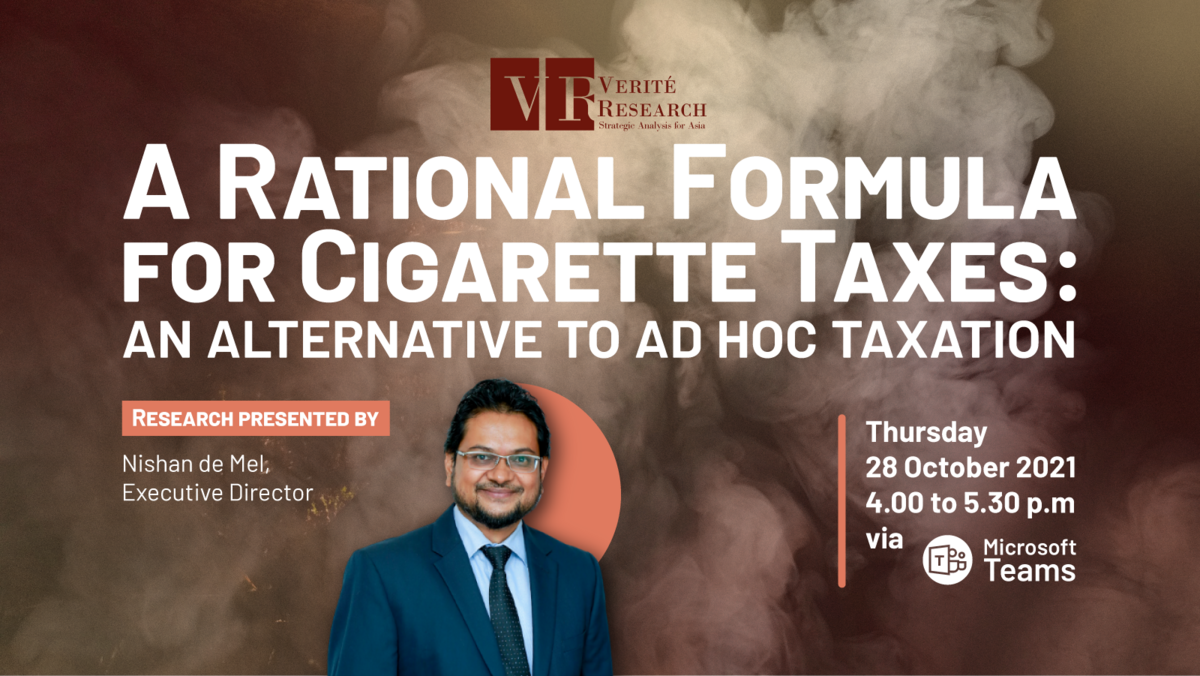A Rational Formula for Cigarette Taxes: An Alternative to Ad Hoc Taxation was the title of a recent online seminar by Verité Research, on 28th October 2021. The analysis showed that the government is currently forfeiting 20 to 25 billion rupees of additional revenue, annually, by failing to apply the cigarette tax formula explained at the seminar.
The seminar explained how a logical, structured, and transparent formula for cigarette taxes in Sri Lanka could be structured; instead of continuing on the current method of ad-hoc tax changes. An array of analysis from published research was presented by Executive Director Dr. Nishan de Mel, with responses by Professor Amala De Silva (University of Colombo) and Harini Weerasekera (Research Economist – Institute of Policy Studies).
Major Highlights
Low price elasticity of demand informs optimal taxation policy
- The low price elasticity of demand (less than 1), with regard to cigarettes, ensures that the social interest of reduced harm can be met alongside the government interest of increased revenue; while the industry also continues to increase its profits.
Ad-hoc Sub-optimal Taxation of Cigarettes
- Verité Research analysis finds that past tax changes have been unpredictable in terms of frequency and volatile in the percentage of tax changed – often leading to sub-optimal taxation decisions.
- Over a decade, up to 2015, the net-of-tax price collected by CTC per cigarette stick has grown faster than the tax-in-price collected by the government. This means that CTC’s revenue per cigarette has been growing at a higher rate than the revenue per cigarette to the government.
Verité’s Indexation Formula and Potential Outcomes
- An optimal tax policy could be indexed to inflation and real GDP growth – to ensure that the affordability of cigarettes does not increase as incomes grow.
- In terms of the indexation base year and the tax-in price percentage, Verité Research provided a historical analytical basis – fixing 1981 as the base year and 75% as the tax in price.
- To reduce the risk of substitution to cheaper cigarette brands – increasing consumption and reducing revenue, the analysis showed that taxation and pricing could be proportional to the length of the cigarette.
The publication on which the presentation was based can be found at: A-Technical-Case-for-Affordability_Based-Pricing-of-Cigarettes_2014.pdf (veriteresearch.org)
